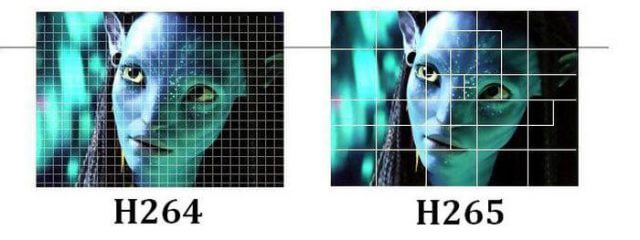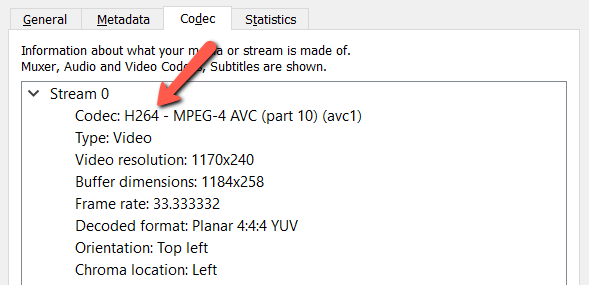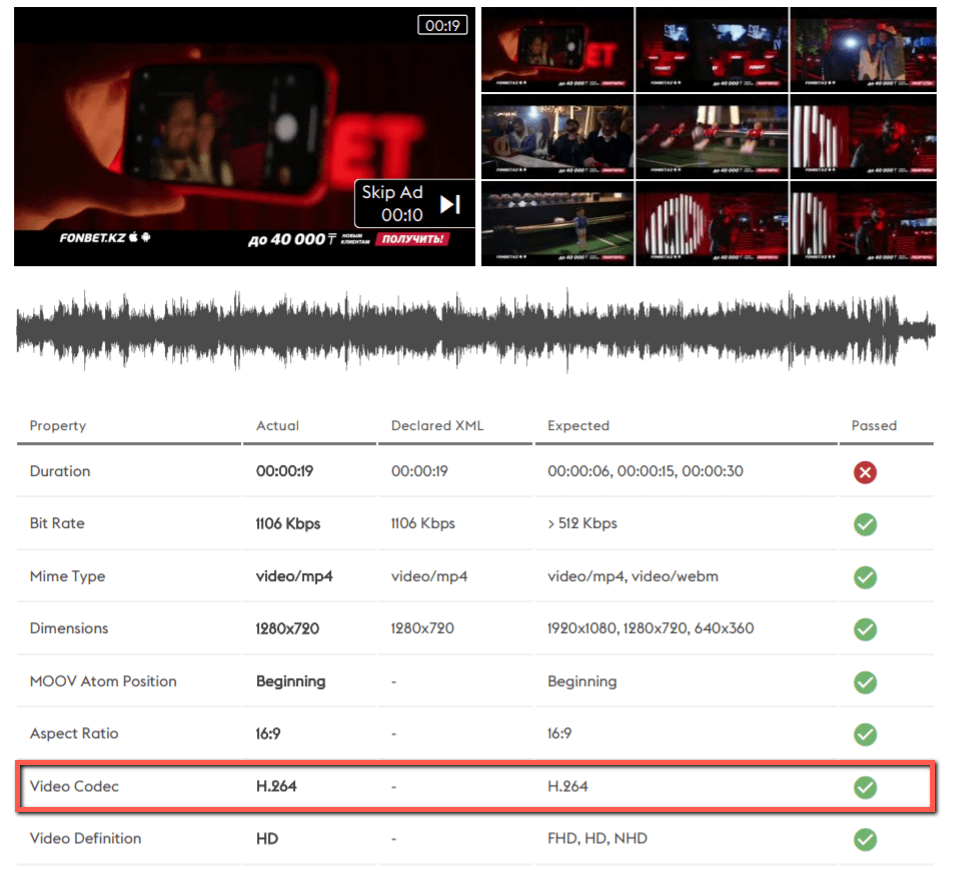VAST Video Ads in H.264 vs H.265. Does it all matter?
Written by Roy
Apr 5, 2022 • 4 min read

VAST Video ads are generally encoded in an MP4 container to facilitate browser support across devices. Inside this container, H.264 has been the industry standard for many years to compress video data. Since 2013, a newer standard called H.265 or High Efficiency Video Coding (HEVC) is on the rise, offering higher compression rates and lower file sizes. Should we all use the newer H.265 standard for VAST video ads? Are you a publisher serving pre-roll video ads from your advertisers? Read on to learn why a QA check on VAST tags is indispensable to make sure the video plays correctly on all devices (and to increase your revenue). How can I check if a VAST video is encoded in H.264?You have two options here:
Why was a new standard developed?Have you ever watched a high quality video where a frame freezes for a second, with visual artifacts and images 'smeared out' for a moment? The new H.265 standard was designed to address exactly this issue, along with other improvements for modern hardware. It also comes with better compression rates, requiring less bandwidth when send over a line. You can expect a reduction in file size of up to 50% compared to H.264. The new standard also supports parallel decoding on multiple CPU cores. Network bandwidth comparisonTypically, H.264 requires more bandwidth for the same high-resolution video as compared to H.265. A 4K video encoded in the old standard requires around 32 Mbps, while the new standard requires only about 15 Mbps. It's evident that the new standard will be part of the future. Let's compare bandwidth requirements in more detail:
Should we all use H.265 for VAST video ads?Short answer: no. The main reason is browser support. While the older H.264 standard is supported by almost all browsers, the newer H.265 standard is not ubiquitously supported yet. Even Chrome 90+ doesn't support it (year 2021). Let's take a look at support for H.264 as shown on Caniuse. It's supported on 97.78% of all browsers.  The newer H.265 standard is only supported on Apple devices and reaches only 19.18% of all internet users.  What happens if I serve H.265 videos to Chrome users?Then the video simply remains black and doesn't play. It's a wasted opportunity for both the publisher as well as the advertiser. It's therefore indispensable for Ad Ops to make sure the video is encoded in the correct format. ConclusionThe current industry standard is not going anywhere soon. As long as browser support for H.265 remains poor, VAST videos should be encoded in H.264 to make sure it plays correctly across all browsers and devices. •••
Download this article as PDF?
No time to read the whole article? Download a free PDF version of this article for later: Permalink
To link to this article, please use: External ResourcesMore from AdValify.io |

